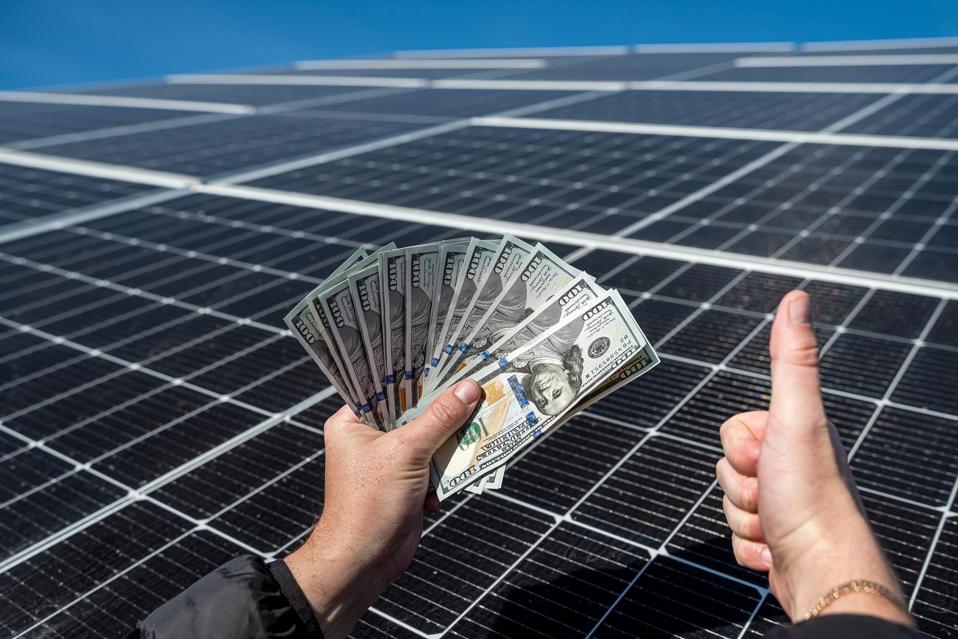In 2024, rooftop solar was the fastest-growing source of electricity worldwide, yet many homeowners still hesitate because of cost, myths and confusion about how the technology actually works. With electric utility rates climbing in most markets, the question is whether you can afford not to understand this fast rising technology.
How Does Solar Power Work?
At its core, solar power is physics, not magic. Photovoltaic panels are made from silicon cells that generate direct current electricity when sunlight excites electrons. With DC, energy flows in one direction. Homes, however, are wired for alternating current where the flow reverses many times per second to safely power appliances. To bridge that gap, an inverter converts DC into AC so your solar power is usable at home.
Storage comes next. Batteries allow homeowners to store excess energy for use at night or during outages or simply when there is intermittent sunshine, and can be sized based on current and future consumption. Without storage, most systems remain grid-tied, meaning you can still draw electricity from your utility when needed.
The Financial Case For Installing Solar At Home
Solar is getting cheaper and more homeowners can take advantage of this to cut their electricity costs. According to the International Renewable Energy Agency’s 2024 Renewable Energy Cost Report, renewable energy technologies have seen sharp cost declines since 2010, thanks to advances in technology, stronger supply chains, and economies of scale. Furthermore, in 2024, 91 percent of newly commissioned renewable power projects were cheaper than any fossil fuel alternative. The global weighted average levelized cost of electricity, which is essentially the lifetime cost per unit of electricity generated, stabilized at USD 0.043 per kilowatt-hour for utility-scale solar PV. This made solar 41 percent cheaper than the least-cost fossil fuel option. Moreover in that same year, renewables collectively helped avoid USD 467 billion in fossil fuel expenses, reinforcing their position as the lowest-cost source of new power and a critical driver of energy security.
For homeowners, these global cost trends translate into more affordable rooftop solar installations. As utility-scale solar prices fall, residential systems also benefit from cheaper panels, lower installation costs, and more competitive financing. The declining LCOE means that over the lifetime of a home solar system, each kilowatt-hour you generate is now often cheaper than what you would pay your utility. This makes calculating your payback period, which is how quickly your installed system pays for itself through bill savings, more favorable than ever, especially as equipment costs drop and electricity prices continue to rise.
How To Calculate Your Solar System Payback
Many homeowners do not know how to calculate solar payback, which makes them easy targets for exaggerated claims and glossy sales pitches. Understanding the numbers puts the power back in your hands, allowing you to separate real savings from costly traps. Payback is simply the number of years it takes for your solar system to earn back what you spent. Payback is simply the number of years it takes for your solar system to earn back what you spent.
Payback Period = System Cost ÷ Annual Savings
Here is how to apply it:
- Residential Solar System cost is what you actually pay after incentives. For example, if your installation is priced at $16,000 and you get a $4,000 tax credit or rebate, your true system cost is $12,000.
- Annual savings is the money you keep each year from lower utility bills, plus any credit for selling excess electricity back to the grid (called net metering or net billing which may or may not apply based on your country). If solar cuts $150 off your monthly bill, that’s $1,800 a year. Add another $200 in credits for power you export, and your annual savings is $2,000.
- Payback period is simply the system cost divided by annual savings. Using the numbers above: $12,000 ÷ $2,000 = 6 years.
That means in six years your system has paid for itself. Since panels typically last 25 years or more, the next 19 years are essentially free electricity.
Regardless of these positive cost trends, upfront solar costs can still feel steep. Especially since several factors such as roof orientation, shading, and expertise of installer can limit viability. Additionally, while maintenance is light, selecting the wrong installer or signing a poorly structured lease can lock homeowners into decades of underperformance and financial regret. According to TIME, U.S. consumers filed 5,331 complaints containing the phrase “solar panels” on reportfraud.ftc.gov between January 1 and September 19, 2023. That figure represents a 31 percent increase compared to the total number of such complaints for all of 2022, and a 746 percent surge since 2018. Analysts note that while this spike reflects the rapid growth of solar adoption, it also underscores the need for stronger consumer protections and clearer industry standards as demand accelerates.
However, according to a 2025 McKinsey article, rooftop solar remains cost-competitive in many markets, with the lifetime cost of electricity generated often cheaper than grid power. Even with recent utility price hikes, 5 percent nationally in the U.S. and 10–20 percent in states like California, Colorado, New York, and North Carolina, many households can still achieve payback times under eight to ten years, a key driver of adoption in both the U.S., Europe and the Caribbean.
Solar is no longer just an environmental choice, it is a financial strategy that shields households from rising utility costs while adding long-term value. For homeowners in the U.S., Europe, and the Caribbean, the question should not just be whether solar pays, but how soon you want to start reaping the returns, and this article is the first in a series on solar home installations designed to guide you through every step of the process.

